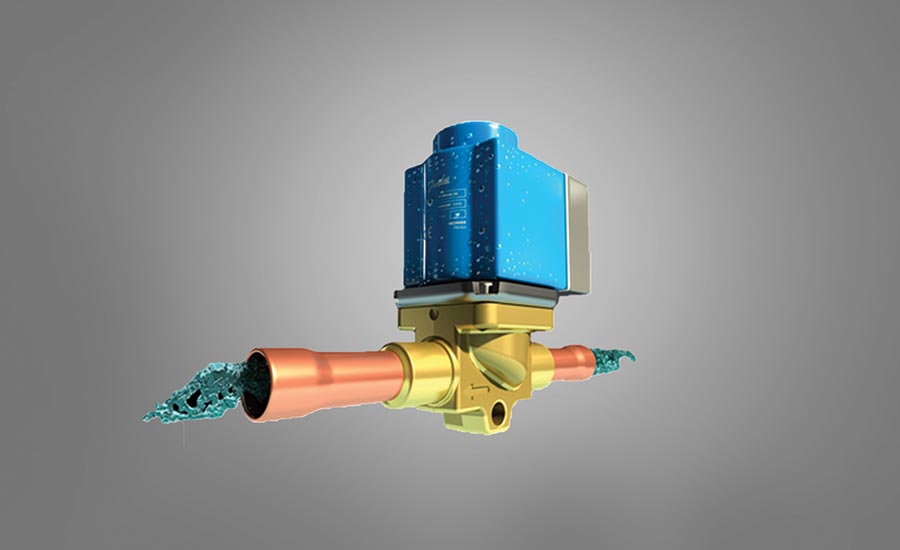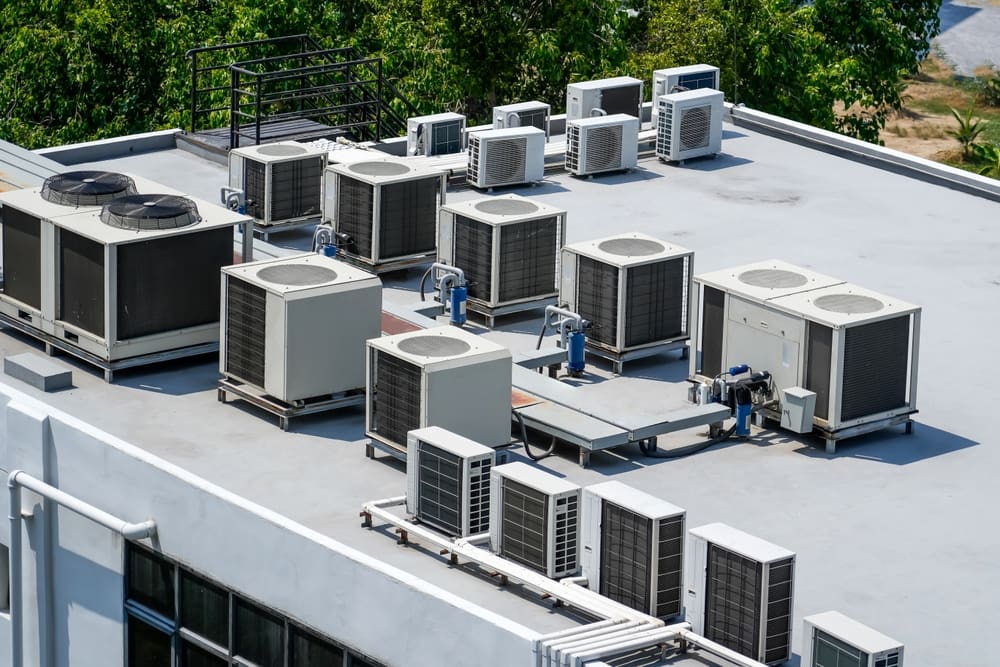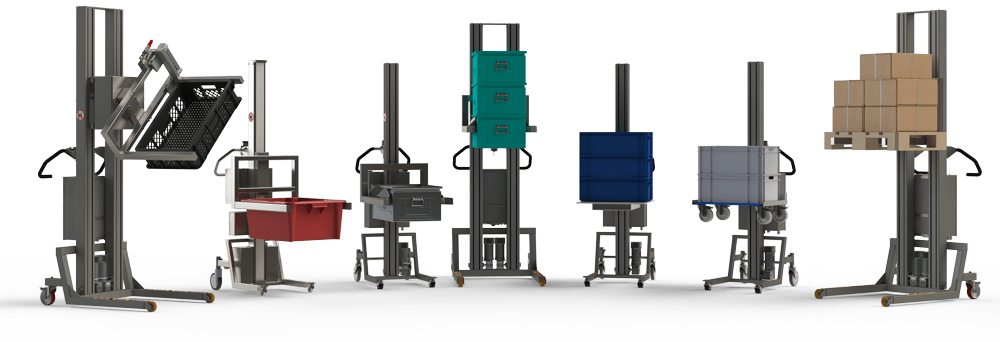MARKET OVERVIEW
Global HVAC Equipment market is estimated to reach $345,870.4 Million by 2031; growing at a CAGR of 5.1% from 2024 to 2031.
The Global HVAC Equipment Market is a critical component of the broader HVAC industry, playing a vital role in regulating indoor conditions. This market includes a variety of systems and equipment focused on temperature control, air quality management, and energy efficiency, serving both residential and commercial settings. As the need for energy conservation and improved air quality continues to grow, the demand for HVAC equipment is on the rise. With ongoing technological advancements, the Global HVAC Equipment market is evolving to meet the changing needs of consumers and businesses through innovative solutions.
Recent years have seen significant transformations within the industry, driven by technological advancements that have enabled the development of more energy-efficient systems with reduced operating costs. Environmental regulations are also pushing manufacturers to design products that are environmentally friendly. Consequently, there is a growing emphasis on sustainable products within the Global HVAC Equipment market, focusing on legal compliance, comfort, and operational efficiency. As urbanization increases in developing regions, the demand for advanced HVAC systems in both residential and commercial buildings will surge, with a preference for products that balance performance and energy efficiency. The market is also witnessing a rise in smart technologies, such as IoT-enabled HVAC systems that offer remote control, real-time diagnostics, and adaptive controls to enhance user comfort while optimizing energy usage. Manufacturers in the Global HVAC Equipment market must prioritize research and development to stay ahead of these trends, including the integration of AI and machine learning technologies in HVAC systems to meet the evolving needs of consumers and regulatory standards. Energy efficiency will remain a key focus in the industry, driven by global regulations and consumer preferences for 'green' products. The future of the Global HVAC Equipment market will be shaped by consumer demand for energy-efficient and environmentally responsible solutions, as well as the industry's response to these evolving needs.

GROWTH FACTORS
The global HVAC equipment market is poised for significant growth driven by the rising demand for energy-efficient and sustainable building solutions in response to the increasing need for reduced energy consumption and concerns about environmental impact. Buildings constructed today are increasingly focused on incorporating sustainable HVAC units, with a potential demand emerging from regions emphasizing energy conservation and strict environmental regulations. Advanced HVAC systems are becoming essential with the development of infrastructure and rapid urbanization, as cities strive to provide optimal living and working conditions. While there are challenges such as high initial costs, maintenance expenses, and installation complexities hindering market growth, the future of the HVAC equipment market looks promising. The integration of smart and IoT-enabled systems is expected to revolutionize the industry, offering real-time monitoring, predictive maintenance, and remote control capabilities to enhance energy efficiency and customer convenience. Despite obstacles, the industry is set to thrive with a focus on energy efficiency and smart technology, promising exciting prospects for the global HVAC equipment market.

MARKET SEGMENTATION
By Heating Equipment Type
With growth in technology and increased awareness towards energy efficiency, the global market for HVAC equipment is expected to see significant growth. HVAC systems play a crucial role in maintaining indoor comfort and air quality, with the rising demand driven by climate change and the need to combat temperature extremes at home and in workplaces. Various segments within the global HVAC equipment market, such as boilers, furnaces, heat pumps, and unitary heaters, offer different heating solutions to meet diverse needs.
Looking ahead, the market for HVAC equipment is anticipated to shift towards more environmentally friendly and energy-efficient technologies. Manufacturers are expected to focus on developing greener solutions to comply with stricter environmental regulations worldwide, aiming to reduce carbon footprints while maintaining optimal performance. The integration of smart technologies into HVAC systems is also on the horizon, allowing consumers to control and monitor their systems remotely for increased convenience and energy savings. The future of the global HVAC equipment market lies in innovative heating technologies, sustainability, and smart elements that cater to the needs of a more environmentally conscious and tech-savvy user base.
By Ventilation Equipment
The market for HVAC equipment is experiencing rapid growth due to the increasing demand for efficient climate control solutions. Technological advancements that enhance energy efficiency are expected to drive the prospects of this market in the future. Ventilation equipment, which plays a crucial role in maintaining indoor air quality, is a significant space in the market that is poised for substantial growth with new innovations making ventilation systems more effective and sustainable. As we move forward, we can anticipate advancements in air handling units, humidifiers, dehumidifiers, air filters, and fan coil units, each serving a unique purpose in today's HVAC systems.
Air handling units, for example, regulate airflow within buildings to filter and condition air before distributing it to various rooms. The future of such units is likely to be more compact, energy-efficient, and offer greater control over airflow with minimal power consumption. Humidifiers and dehumidifiers will also play crucial roles in maintaining indoor humidity levels to prevent damage to building materials and ensure comfort and health. With a growing focus on air quality, advanced filtration systems that purify pollutants and monitor air quality are expected to see increased demand. The global HVAC equipment market is set for substantial growth, with a key focus on energy efficiency, sustainability, and indoor air quality improvements to meet the evolving needs of a changing world.
By Air Conditioning Equipment
The global market for HVAC equipment is experiencing steady growth and promising future prospects. HVAC, which stands for Heating, Ventilation, and Air Conditioning, has become a necessity for ensuring thermal comfort and improving indoor air quality in both residential and commercial settings. As the world continues to modernize and prioritize energy efficiency, the demand for state-of-the-art HVAC products is expected to rise. The market is segmented into air conditioning equipment, which is becoming increasingly important due to rising global temperatures caused by climate change. Within this segment, unitary air conditioners, room air conditioners, packaged terminal air conditioners, and chillers cater to specific needs based on the size and requirements of the space. Developing countries, driven by urbanization and construction activities, are likely to witness a surge in demand for efficient and cost-effective cooling systems. In the hospitality sector, PTACs are popular for their ability to cool individual rooms while maintaining temperature control, particularly in hotels. Chillers are extensively used in industrial and commercial settings, such as office complexes, shopping malls, and manufacturing facilities. Looking ahead, technological advancements will drive the HVAC equipment market towards remote-controlled smart systems that can adjust based on real-time weather conditions, promoting energy efficiency and sustainability. Manufacturers will focus on producing environmentally friendly products with minimal carbon footprints to meet the growing concerns around climate control. As sustainability and climate issues remain at the forefront of global agendas, the HVAC equipment market is poised for expansion in the coming years.
By End User
The Global HVAC Equipment market is poised for rapid growth in the coming years, driven by a multitude of factors across various segments. Heating, Ventilation, and Air Conditioning (HVAC) are essential components of modern infrastructure, providing temperature control and air quality in diverse environments. Factors such as higher urbanization rates, climate change, and the demand for energy-efficient systems will contribute to this growth. In the commercial sector, HVAC systems play a crucial role in maintaining a comfortable environment for employees and customers in expanding businesses and new commercial buildings. The adoption of advanced HVAC systems is also fueled by the growing awareness of green building practices and the use of smart technologies for energy efficiency. Similarly, in residential settings, homeowners are increasingly turning to HVAC systems that offer comfort, efficiency, and energy performance, driven by rising energy costs and environmental concerns. The integration of smart home technology allows for remote control and energy-saving capabilities. In the industrial sector, HVAC systems are indispensable for creating controlled environments in manufacturing plants and warehouses, where accurate temperature and air quality control are essential. As industries worldwide continue to grow and become more automated, the demand for industrial-grade HVAC systems will remain high. The future of the Global HVAC Equipment market looks promising, with advancements in technology and a growing focus on sustainability driving continued growth and innovation across industries.
REGIONAL ANALYSIS
The global HVAC equipment market is a highly diversified landscape, with significant segmentation based on regions such as North America, Europe, Asia-Pacific, South America, and the Middle East & Africa. Each of these regions presents unique trends and opportunities within the market. In North America, including the United States, Canada, and Mexico, there is a growing demand for energy-efficient solutions and sustainable practices, driven by government policies focused on reducing energy consumption. This has led to a shift towards more sophisticated and eco-friendly HVAC systems, with a potential for further technological advancements in smart HVAC solutions. In Europe, encompassing countries like the UK, Germany, France, and Italy, the need for HVAC equipment is on the rise due to colder climes and regulatory pressure for greener technology. Energy-efficient HVAC systems that minimize environmental impact are gaining traction in the region, shaping the market towards sustainability. In Asia-Pacific, with countries like India, China, Japan, and South Korea experiencing increased industrial growth and urbanization, there is a high demand for HVAC systems in residential and commercial spaces. The region's large population base further drives the need for efficient temperature control systems, propelling progress within the HVAC market. South America, particularly Brazil and Argentina, and the Middle East & African region are also contributing to the global HVAC equipment market growth, with a focus on energy efficiency and infrastructure development in response to extreme climates for comfortable living and working conditions.

KEY INDUSTRY PLAYERS
The Global HVAC Equipment market is currently witnessing significant growth driven by the rising demand for energy-efficient and sustainable solutions in heating, ventilation, and air conditioning. As environmental concerns escalate, industry companies are focusing on innovation to meet stricter requirements and provide more eco-friendly options for customers. The market's momentum is fueled by technological advancements and increasing awareness about reducing carbon footprints. Moving forward, key players will shape the industry by introducing smart, green, and high-performance HVAC equipment.
Looking ahead, major players in the Global HVAC Equipment market are expected to face intensified competition. Companies like Daikin Industries, Ltd., Gree Electric Appliances Inc. of Zhuhai, and Johnson Controls are at the forefront of innovation and efficiency, integrating advanced technologies like artificial intelligence and the Internet of Things into smart systems that optimize energy usage. Meanwhile, new entrants and emerging players such as LG Electronics and Samsung HVAC are introducing cost-effective and innovative solutions to cater to tech-savvy consumers. This competitive landscape will drive prices down and encourage the adoption of advanced HVAC technologies, ultimately benefiting consumers and businesses alike. Additionally, a growing emphasis on environmental sustainability will shape the strategies of competitive players like Mitsubishi Electric, Bosch Thermotechnology, and Rheem Manufacturing, leading to the development of products that meet strict energy standards and consumer expectations. As the industry progresses, companies like Carrier Global Corporation, Fujitsu General, and American Standard will continue to play a significant role in driving innovation and meeting the evolving demands for sustainable HVAC solutions. The future of the Global HVAC Equipment market promises to be competitive, dynamic, and beneficial for all stakeholders as technology advances and sustainability become increasingly important.
REPORT SCOPE AND SEGMENTATION
|
Attributes |
Details |
|
Market Size By 2031 |
USD 345,870.4 Million |
|
Growth Rate |
CAGR of 5.1% |
|
Forecast period |
2024 - 2031 |
|
Report Pages |
250+ |
|
By Heating Equipment Type |
|
|
By Ventilation Equipment |
|
|
By Air Conditioning Equipment |
|
|
By End User |
|
|
By Region |
|
|
Key Market Players |
|



_page-000178.jpg)
_page-000180.jpg)
_page-000179.jpg)
_page-000113.jpg)






 APAC:+91 7666513636
APAC:+91 7666513636





